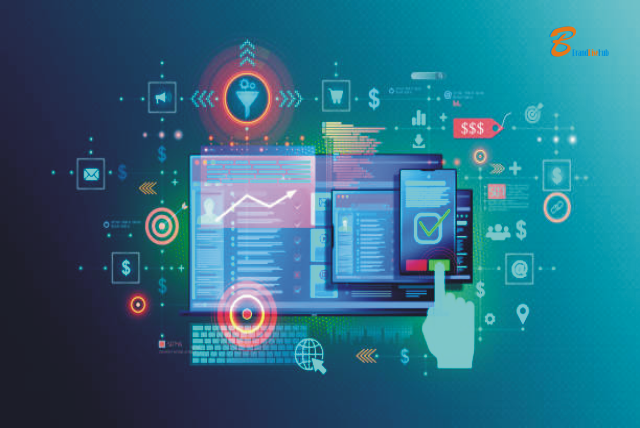Digital Fitness Tracking Innovations | Transform Your Health Journey 2024
Contents
- 1
- 1.1 Introduction to Digital Fitness Tracking Innovation
- 1.2 Evolution of Fitness Tracking Technology
- 1.3 Benefits of Digital Fitness Tracking
- 1.4 Cutting-Edge Features in Fitness Trackers
- 1.5 Integration of Health and Wellness Data
- 1.6 Challenges and Future Trends in Digital Fitness Tracking
- 1.7 The Future of Fitness Monitoring
- 1.8 FAQs
- 1.8.0.0.1 Q1. What is digital fitness tracking?
- 1.8.0.0.2 Q2. How does digital fitness tracking work?
- 1.8.0.0.3 Q3. What are the benefits of using digital fitness trackers?
- 1.8.0.0.4 Q4. What features should I look for in a digital fitness tracker?
- 1.8.0.0.5 Q5. Are digital fitness trackers accurate?
- 1.8.0.0.6 Q6. How can I ensure the privacy and security of my health data?
- 1.8.0.0.7 Q7. Can digital fitness trackers help with weight loss?
- 1.8.0.0.8 Q8. Are there any risks or limitations to using digital fitness trackers?
- 1.8.0.0.9 Q9. How do I sync my digital fitness tracker with other devices or apps?
- 1.8.0.0.10 Q10. What is the future of digital fitness tracking?
- 1.9 Conclusion
Digital fitness tracking innovations Health and Wellness have revolutionized how we stay healthy. These gadgets are like personal coaches, keeping tabs on every step we take, and every calorie we burn. They’re our virtual cheerleaders. Motivating us to push a little harder and go a little further. With Digital fitness tracking innovations, we can track our progress in real-time. Set new goals, and even compete with friends. It’s like having a gym buddy in our pocket, making fitness more fun and accessible than ever before.
- Introduction to Digital Fitness Tracking Innovation
- Evolution of Fitness Tracking Technology
- Benefits of Digital Fitness Tracking
- Cutting-Edge Features in Fitness Trackers
- Integration of Health and Wellness Data
- Challenges and Future Trends in Digital Fitness Tracking
- The Future of Fitness Monitoring
Introduction to Digital Fitness Tracking Innovation
Starting a journey towards a healthier lifestyle is now easier than ever. Digital Fitness Tracking Innovations have made this possible. These cutting-edge technologies have transformed the way we approach fitness. Offering unprecedented insights and motivation to achieve our wellness goals. From wearable devices to smartphone apps. These innovations integrate into our daily routines. Providing real-time data and personalized guidance. In this dynamic landscape of health and technology.
Evolution of Fitness Tracking Technology
From humble beginnings to the forefront of health and wellness. Fitness-tracking technology has undergone a remarkable evolution. Simple pedometers paved the way. Counting steps as individuals embarking on their fitness journeys. As technology advanced, the capabilities of fitness trackers also advanced. They introduced heart rate monitors. They added GPS tracking and sleep analysis features. With each Digital Fitness Tracking innovation, these devices became more sophisticated.
offering comprehensive insights into our physical activity and overall health. Today, we stand at the brink of a new era in fitness tracking. Wearable gadgets integrate with our smartphones and smartwatches. They provide a holistic approach to monitoring and optimizing our well-being. Fitness-tracking technology keeps improving. Helping people around the world stay healthier and more active.

Benefits of Digital Fitness Tracking
In today’s fast-paced world, digital fitness tracking offers a plethora of benefits for individuals striving to maintain a healthy lifestyle. These innovative tools provide real-time feedback. They also offer personalized insights. This empowers users to make informed decisions about their health and fitness goals. By monitoring key metrics such as steps taken, calories burned, and sleep quality, individuals increase their understanding of their habits. They can track their progress more effectively. Moreover.
Digital Fitness Tracking Innovations fosters accountability and motivation, as users can set goals, track their progress, and celebrate their achievements. Additionally, these technologies promote a sense of community and support. They help users connect with like-minded individuals. Users can also share their experiences. Overall, digital fitness tracking serves as a powerful tool for improving physical well-being. It also enhances mental well-being. This ultimately leads to a happier and healthier life.
Cutting-Edge Features in Fitness Trackers
Fitness trackers have come a long way from simply counting steps. Today, these devices boast an array of cutting-edge features designed to enhance the user experience and maximize health outcomes. Advanced sensors now enable continuous heart rate monitoring, providing valuable insights into cardiovascular health and workout intensity. GPS tracking capabilities allow for precise mapping of outdoor activities. Altimeters measure elevation climbed, giving a more comprehensive view of physical exertion.
Sleep tracking features monitor sleep patterns and quality, offering insights into overall well-being and recovery. Some fitness trackers even incorporate advanced metrics like blood oxygen saturation levels. They also track stress, providing a holistic approach to health monitoring. With these cutting-edge features, fitness trackers have evolved into indispensable tools for optimizing fitness, performance, and overall wellness.
Integration of Health and Wellness Data
In today’s interconnected world, the integration of health and wellness data is revolutionizing how individuals manage their well-being. Digital platforms and wearable devices seamlessly collect data from various sources. They synchronize information from Digital Fitness Tracking Innovations, smart scales, and health apps. This integration provides users with a comprehensive view of their health metrics. These metrics include physical activity, sleep patterns, and nutrition. It even encompasses stress levels. By consolidating this data into centralized platforms or dashboards, individuals can identify trends. They can set goals and make informed decisions. This helps improve their overall health and wellness. Moreover, advancements in data analytics and artificial intelligence offer personalized recommendations. They provide insights targeted to each individual’s unique needs and preferences. By integrating health and wellness data, individuals can proactively work toward their wellness goals. They can lead healthier and more fulfilling lives.
Challenges and Future Trends in Digital Fitness Tracking
As Digital Fitness Tracking Innovations continues to evolve, it faces several challenges and anticipates future trends that shape its trajectory. One challenge is ensuring data accuracy and reliability, particularly as users demand more precise measurements and insights. Privacy concerns also loom large, with users increasingly wary of sharing sensitive health data and potential breaches. Moreover, the market saturation of fitness trackers and apps poses a challenge for companies to differentiate themselves and innovate.
Looking ahead, the future of Digital Fitness Tracking Innovations is ripe with exciting possibilities. Integration with healthcare systems and professionals could lead to more personalized and effective wellness programs. Wearable technology is expected to become even more seamless and unobtrusive, potentially integrating directly into clothing or accessories. Artificial intelligence will analyze vast amounts of data. It will provide actionable insights and predictive analytics. Additionally, the rise of virtual and augmented reality may revolutionize how users engage with fitness content and training programs.
The future of digital fitness tracking holds promise. It empowers individuals to take control of their health and well-being like never before. As technology continues to advance, so too will the opportunities to lead healthier, more active lifestyles.
The Future of Fitness Monitoring
- As technology advances rapidly, the future of fitness monitoring holds immense potential. It can revolutionize how we track and optimize our physical well-being. One prominent trend is the merging of health monitoring devices. They form integrated ecosystems, providing seamless data collection and analysis across multiple platforms. Wearable technology will continue to evolve. Devices will become ultra-portable and versatile. They will be capable of monitoring a wide range of health metrics. These metrics include heart rate and hydration levels, as well as muscle activity and stress indicators.
- In the realm of virtual and augmented reality, immersive fitness experiences will become increasingly prevalent. They will allow users to engage in interactive workouts and training programs from the comfort of their homes. These virtual environments will offer personalized coaching and feedback, catering to individual fitness levels and preferences.
- The democratization of fitness monitoring technology will make it more accessible to people of all backgrounds and abilities. This will foster inclusivity and diversity in the wellness industry. Individuals across the globe, from remote communities to urban centers, will have access to cutting-edge tools. These resources will help in improving their health and fitness.
Overall, the future of Digital Fitness Tracking Innovations monitoring promises a holistic and personalized approach to health and wellness. It empowers individuals to lead healthier, more active lifestyles. This ultimately enhances their quality of life.
FAQs
Q1. What is digital fitness tracking?
Digital fitness tracking uses technology to monitor your physical activity, health, and wellness. This includes wearable devices or smartphone apps.
Q2. How does digital fitness tracking work?
Digital fitness trackers use sensors to collect data on metrics like steps taken, heart rate, calories burned, and sleep patterns. This data is then analyzed and presented to users through apps or online platforms.
Q3. What are the benefits of using digital fitness trackers?
Digital fitness trackers provide real-time feedback, personalized insights, and motivation to help users stay active and achieve their wellness goals. They also foster accountability and community support, making it easier to stick to healthy habits.
Q4. What features should I look for in a digital fitness tracker?
Look for features like heart rate monitoring, GPS tracking, sleep analysis, and waterproof design. Consider your specific fitness goals and lifestyle to choose a tracker that best suits your needs.
Q5. Are digital fitness trackers accurate?
Digital fitness trackers can provide valuable insights. However, their accuracy may vary depending on factors like device quality, placement, and user behavior. It’s essential to use them as tools for general guidance rather than precise measurements.
Q6. How can I ensure the privacy and security of my health data?
Choose reputable brands and review their privacy policies before using any digital fitness tracking device or app. Opt for devices with robust security measures and consider adjusting privacy settings to control how your data is shared.
Q7. Can digital fitness trackers help with weight loss?
Digital fitness trackers can be valuable tools for weight management. They help users track their activity levels, calories burned, and food intake. Combined with a balanced diet and regular exercise, they can support weight loss goals.
Q8. Are there any risks or limitations to using digital fitness trackers?
Potential risks include overreliance on technology for health management, inaccurate data readings, and potential data privacy breaches. It’s essential to use digital fitness trackers as part of a holistic approach to health and wellness.
Q9. How do I sync my digital fitness tracker with other devices or apps?
Most digital fitness trackers come with companion apps that allow you to sync your data with smartphones or computers. Follow the instructions provided by the manufacturer to set up syncing and access your data across multiple devices.
Q10. What is the future of digital fitness tracking?
The future of digital fitness tracking will likely include advancements in wearable technology. It will also involve integration with healthcare systems. Additionally, there will be the development of more personalized and immersive fitness experiences. As technology continues to evolve, so too will the capabilities and potential of digital fitness tracking innovations.
Conclusion
In today’s Digital Fitness Tracking Innovation landscape, technology and wellness come together. This fusion offers unparalleled opportunities for individuals. People can now prioritize their health. From basic step counters to advanced health companions, the journey to optimal well-being is becoming more personalized and accessible. Digital fitness tracking not only provides real-time feedback and insights but also fosters a supportive community. Yet, challenges like data security and market saturation persist. Looking forward, integration with healthcare systems and innovative wearable technology promises to redefine fitness and wellness engagement. Ultimately, by using digital tools, individuals empower themselves. They take control of their well-being. This creates a future where vibrant health is within everyone’s reach.







One Comment